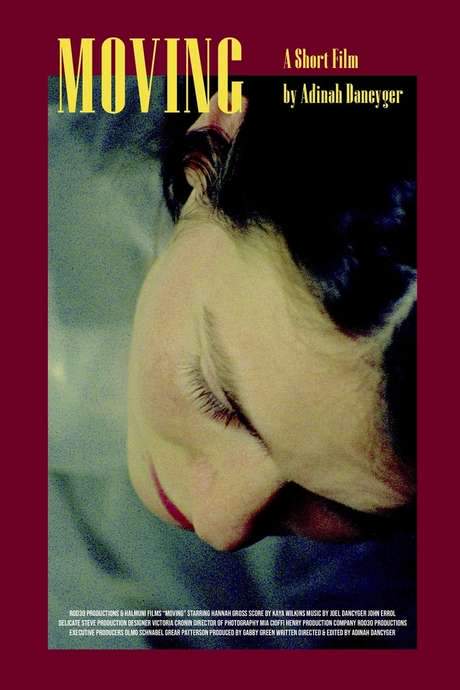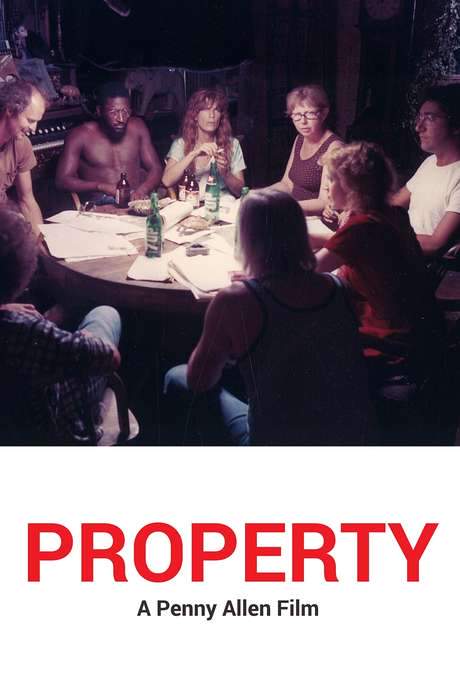Warning: spoilers below!
Haven’t seen The Chain yet? This summary contains major spoilers. Bookmark the page, watch the movie, and come back for the full breakdown. If you're ready, scroll on and relive the story!
The Chain (1984) – Full Plot Summary & Ending Explained
Read the complete plot breakdown of The Chain (1984), including all key story events, major twists, and the ending explained in detail. Discover what really happened—and what it all means.
The Chain follows seven households that form a circular property chain, stitched together by a crew of removal workers who are hired to help each family move. Each link in the chain reveals a slice of ordinary life, from the banal to the quietly profound, and every household paired with its mover is tied to one of the seven deadly sins. The film opens with Bamber Warren Mitchell and his Lasts Removal and Storage team as they start their rounds in Willesden, setting the tempo for a moving puzzle that will connect lives in unexpected ways.
Des Herbert Norville is the first link. In Hackney, he is packing up the room in his Mum’s house as he prepares to move in with his girlfriend. Des is waiting outside his new home while a police presence, represented by a Policeman Robin Summers, interrupts the moment, highlighting the tension between leaving home and stepping into a new stage of life. Des’s friend Stan Ron Pember helps by loading his things into an old Mini Traveller, a small, almost comical escape vehicle that becomes a moving symbol of transition. The scene mixes frustration, anticipation, and a hint of mischief as Des faces the practicalities of departure and the emotional tug of leaving his mother behind.
Keith Denis Lawson, moving from Tufnell Park to Willesden with his Indian wife Carrie, represents Sloth in the chain. On the road to pick up the flat keys, Keith encounters Des again as he’s just moving into the old rented space, and the exchange becomes a window into the couple’s hopes and fears about starting a family. The pair’s conversation about whether to have children is charged with a hesitation that mirrors Keith’s cautious approach to the move itself, illustrating how the logistics of relocation can foreground personal choices and long-term plans.
In Willesden, Dudley David Troughton and Alison Phyllis Logan face a different pressure: they need a bigger flat for their young daughter. The memory of their daughter’s conception lingers as a reminder of the life they are trying to build, while Paul Tony Westrope from Lasts accidentally goes to the wrong flat, creating a small, comical disruption for an elderly woman and a reminder of how easily confusion can derail a move. Bamber’s team is tasked with getting them to a new place in Hammersmith, a shift that carries its own emotional weight as Granddad Maurice Denham—the family’s stern, veteran presence—tries to keep orders in a military-like fashion and organize the moving process.
Granddad, who embodies the sin of Envy, moves into the granny flat in a new property, but trouble arises when some troublemakers squat in the new home and change the locks. The chain’s problems deepen when you realize that the moving day is compromised by deceit and misplacement, turning a standard relocation into a lesson in trust and adaptation.
The twist of the chain comes with Mrs Andreos Billie Whitelaw. Bamber persuades the widow to proceed with her planned move to Holland Park by lingering in her kitchen and letting her tell stories of her late husband and her homeland of Limassol. The persuading and the storytelling create an extra job—cash in hand—that sweetens the deal for Bamber but also deepens the sense of longing and memory that accompanies any move. Mrs Andreos accepts a lift in the removal van and joins a cheerful singalong of “Karma Chameleon” along the way, a moment that weds humor to the more sorrowful notes of memory and loss, and reinforces how the past travels with people as they relocate.
The Holland Park family—moving to Knightsbridge—embodies Pride. They watch their neighbor head to Belgrave Square with envy, and their own move is spurred by a sense that Holland Park is becoming “too shabby” for their status. Deidre Judy Parfitt has bought a new Daimler, and the entire scene underscores how social aspirations and appearances influence choices about where to live and how to present oneself.
In Knightsbridge, Thomas Leo McKern faces his own moral reckoning as he contemplates the end of life. Representing Wrath, he discusses with a friend the idea of auctioning his belongings at Sotheby’s while he is alive to witness the process. He clings to a single memento—a cheap souvenir plate from Southend-on-Sea—that may hold more meaning than its monetary value. A driver ferries him to Quilter Street in Whitechapel, the place where he once lived, now a rented room that had been vacated by Des, the film’s first departing figure. The journey through Thomas’s decisions and the home he returns to echoes the ring-fenced anxieties of aging and legacy.
As the story threads together the fates of these families, each move culminates in a final tableau: the new homes are shown, and yet a homeless Old Lady Patsy Smart appears in the final frame, wrapped in newspaper and preparing to spend the night in a doorway. Her image, subtle but persistent, suggests that the chain’s human costs are never fully resolved and that the city’s unseen corners carry the quiet aftermath of every move. The film closes with this final image threaded through the formerly linked stories, a somber reminder that the pursuit of a fresh start is always shadowed by memory, loss, and the reminder that people are always moving, both physically and emotionally.
Throughout the journey, the cast threads through the narrative as living components of the moving world: Thomas [Leo McKern] mirrors the tension of aging and acceptance; Des [Herbert Norville] and his Mum [Des’s Mum played by Carmen Munroe] anchor the opening, while Mrs Andreos [Billie Whitelaw] and Keith [Denis Lawson] bring human concerns of memory and choice to the forefront. The removal team—Bamber [Warren Mitchell], the various Removal Men [Christopher Ettridge; Ben Onwukwe; James Coyle; George Rossi], and Paul [Tony Westrope]—functions as a chorus that underscores the film’s meditation on why people move and what they leave behind. The Chain remains a quiet, humane meditation on family, obligation, ambition, and the imperfect but hopeful act of starting anew.
Last Updated: October 09, 2025 at 14:48
Unlock the Full Story of The Chain
Don't stop at just watching — explore The Chain in full detail. From the complete plot summary and scene-by-scene timeline to character breakdowns, thematic analysis, and a deep dive into the ending — every page helps you truly understand what The Chain is all about. Plus, discover what's next after the movie.
The Chain Timeline
Track the full timeline of The Chain with every major event arranged chronologically. Perfect for decoding non-linear storytelling, flashbacks, or parallel narratives with a clear scene-by-scene breakdown.

Similar Movies to The Chain
Discover movies like The Chain that share similar genres, themes, and storytelling elements. Whether you’re drawn to the atmosphere, character arcs, or plot structure, these curated recommendations will help you explore more films you’ll love.
Explore More About Movie The Chain
The Chain (1984) Scene-by-Scene Movie Timeline
The Chain (1984) Movie Characters, Themes & Settings
The Chain (1984) Spoiler-Free Summary & Key Flow
Movies Like The Chain – Similar Titles You’ll Enjoy
Moving (1988) Film Overview & Timeline
Green House (2018) Spoiler-Packed Plot Recap
Moving (2019) Plot Summary & Ending Explained
The Chain (2019) Plot Summary & Ending Explained
Open House (2004) Detailed Story Recap
A House of Your Dreams (2006) Full Movie Breakdown
Chain Letters (1985) Full Summary & Key Details
Big House (2020) Ending Explained & Film Insights
Stranger In My House (1982) Detailed Story Recap
The House (2022) Full Movie Breakdown
One Way Pendulum (1965) Ending Explained & Film Insights
Chains (1949) Detailed Story Recap
Drive-In (1976) Complete Plot Breakdown
Property (1979) Full Summary & Key Details
Chain of Desire (1992) Detailed Story Recap


















